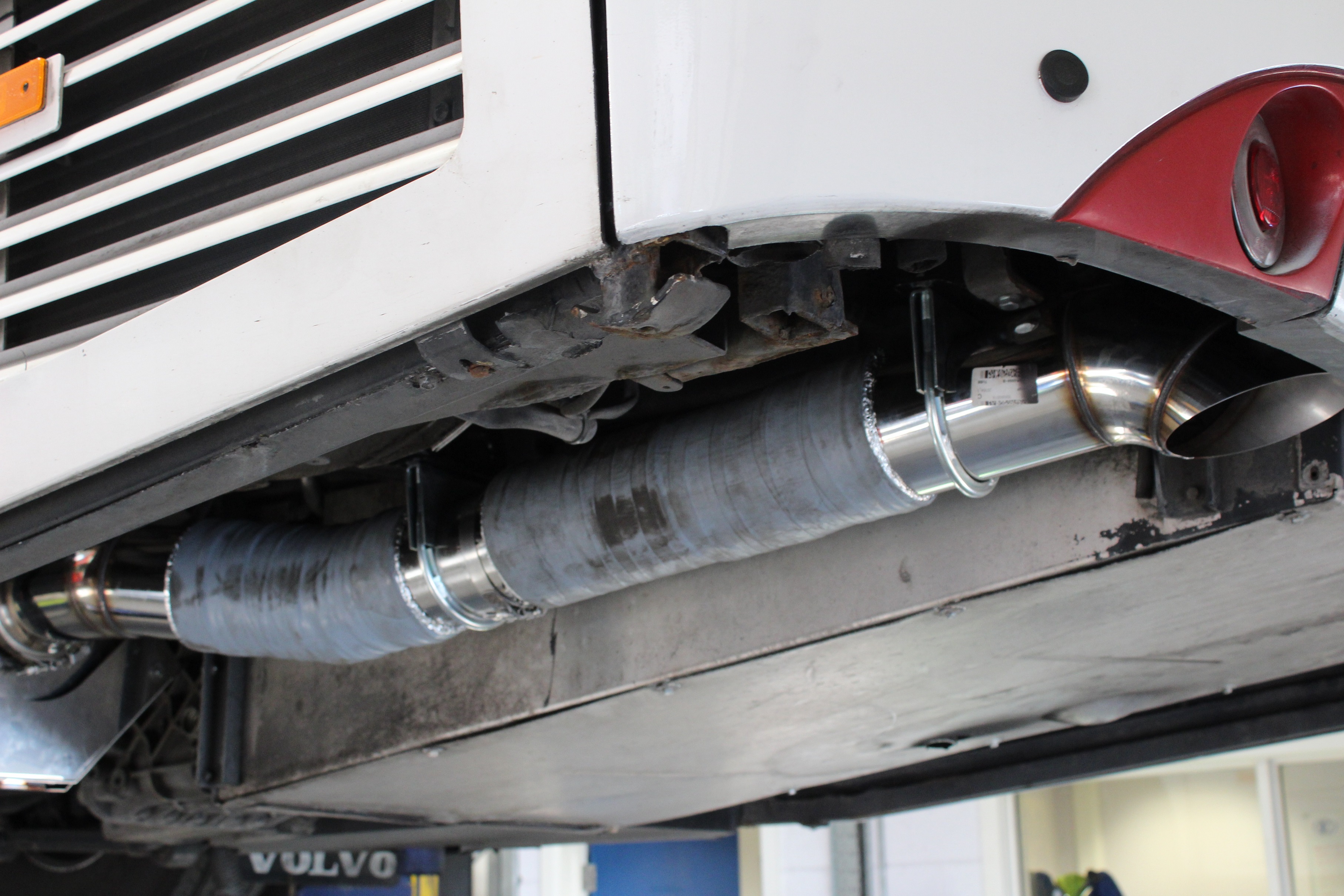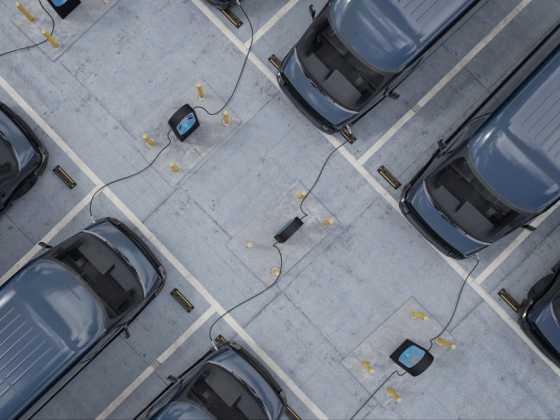Retrofit technology: The alternative solution for CAZ compliance

There’s no doubt that the freight and bus sectors will come under increasing pressure to move to zero emission solutions, but where electric or other options are not yet available, approved retrofit technology is a viable option now, writes Andy Eastlake, managing director of Zemo Partnership
Fleet operators are under increasing pressure to comply with air quality and greenhouse gas emissions regulations set at national, local or even company level. Fortunately, as GreenFleet readers know, there’s a wide and growing range of electric vehicles available to car and van fleet operators that, with zero tailpipe emission and renewable electricity, meet both objectives immediately. This, of course, is ideal when growing your fleet or replacing vehicles, but not every car, van or bus is ‘worn out’ and larger van, and truck operators also have few electric choices. So addressing pollution caused by existing vehicles is an essential step towards achieving cleaner air and net zero greenhouse gas emissions.
We’ve often highlighted the role of renewable fuel options such as biomethane and hydrotreated vegetable oil (HVO) in achieving net GHG reductions (and future GreenFleet focus events and articles will cover more on this) but the clean air imperative is particularly pressing now as we return to pre-pandemic (or worse) levels of transport on our roads after a period of significantly lower fleet renewal.
Operating in clean air zones
For both public and private operators of larger, heavier vehicles with longer range requirements and/or operations in Clean Air Zones there are relatively few economic options to achieve zero emissions and these vehicles can be expensive to replace (and often have longer replacement cycles) creating a challenge for their operators in certain situations.
To operate in Clean Air Zones introduced (or to be introduced) across the UK, all petrol vehicles need to be accredited to Euro 4 levels while, for diesels, Euro 6/VI is the even more challenging requirement. This applies to all CAZs, the London Ultra Low Emission Zone (ULEZ) and Low Emission Zones (LEZs) in Scotland. The standards are all consistent but, there are differences, however, from zone-to-zone, in terms of which vehicles are charged. This is the decision of the local implementing authority and can depend on where they see the source and scale of the problem, what they can control and the amount of time their modelling predicts it will take to achieve compliance with regulations.
To tackle this challenge for operators, Zemo Partnership and Energy Saving Trust developed the Clean Vehicle Retrofit Accreditation Scheme (CVRAS). Introduced in 2019 the initiative now has 24 accredited retrofit systems listed on the CVRAS-Register.
The scheme includes a certification process to approve technologies that can be retrofitted to (typically) diesel vehicles to reduce nitrogen oxides (NOx) and particulate (PM) emissions and achieve Euro 6 / VI equivalent standards.
The scheme currently approves solutions for black taxis, some vans, trucks, buses and refuse collection vehicles. Future work is looking in more detail at the options for re-powering vehicles with electric drivetrains and batteries, but the vast bulk of retrofits to date (over 8000) are selective catalytic reduction (SCR) systems, the same technology as fitted to every new Euro 6/VI diesel road vehicle, with re-power and conversion to LPG available for black taxis and a handful of re-powers with a new Euro VI engine.
The CVRAS scheme is recognised by authorities responsible for Clean Air Zones in England and Wales plus London’s ULEZ and Scotland’s LEZs. It provides the only approved retrofit solutions which allow free access to these zones automatically by ensuring the vehicle is registered in the national CAZ checker database.
Certification
The CVRAS process certifies the performance of the systems in a similar way to the certification of new vehicles, but it also includes an ongoing requirement (and monitoring system) to ensure vehicles fitted with these systems on-board continue to cut emissions of nitrogen oxide by 80 per cent or more in real world operation.
A major activity recently for Zemo and EST has been to validate this by in-service monitoring using a combination of specialist Portable Emission Measurement Systems (PEMS) and the on-board telematics installed as part of the retrofit system.
Companies including HJS, Eminox, Proventia, Driveline and Cybrand are the primary providers of exhaust retrofit solutions listed on the CVRAS Register. Solutions are available for a wide range of heavy goods vehicles and buses.
Cummins and Millbrook offer accredited Euro VI engine re-power options for several buses and some trucks, while Magtec has an electric re-power service for double and single-deck buses, a selection of HGVs and refuse collection vehicles.
VRS, meanwhile, has completed 400 re-power and LPG conversions of black cabs.
The power of telematics
Zemo Partnership and Energy Saving Trust continue to develop the CVRAS processes. Early results from in-service monitoring show how important it is to ensure that system are maintained and supported to deliver their emission savings potential and also to identify opportunities to further improve the systems themselves. It also helps to show how vehicle operations can be managed to gain even greater benefits. Key learnings have been to show the power of on board telematics to give essential insights into what vehicles are doing and the challenge of ‘managing’ and interpreting all the potential data available from these information systems.
There are still a modest but slowly growing number of accredited retrofit systems that can achieve the Euro VI equivalence required available to operators. Adding to the range available means running more approval tests. With costs ranging from £50k to £150k to develop, test and certify a retrofit DPF or SCR system, a potential supplier needs the security of knowing that customers exist for the product. Operators who may be interested in retrofit solutions for their vehicles are advised to let potential suppliers know their requirements. Energy Saving Trust, with Zemo Partnership support, is working with local authorities and operators to identify opportunities for pooling demand and generating the volumes needed to encourage development of new applications where there may be sufficient potential uptake.
Where zero emission (or Euro 6/VI compliant) products are available, bringing forward replacement cycles may be the best solution in a growing number of circumstances as more and more vehicles serving a wider range of uses come on to the market. However, with increasing cost pressures, replacing vehicles can often be a challenge so knowing how to make the most of the existing fleet is equally important.
Technologies on the market
To support the CVRAS scheme, Zemo Partnership has updated the Clean Vehicle Retrofit Technology Guide which explains the retrofit technologies on the market and their application in different vehicle segments, with supporting vehicle operator case studies, an outline of how they are accredited as well as the UK air quality policy framework which is driving the uptake of retrofit solutions.
There’s no doubt that the freight and bus sectors will come under increasing pressure to move to zero emission solutions but where electric or other options are not yet available, Euro VI emissions-level retrofit solutions combined with powerful telematics monitoring, can provide local authorities and private operators with a viable option for continuing operations in the cleanest and most efficient way where vehicle replacement is not an option and other solutions are not yet viable.






